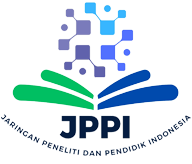The Utilization of Virtual Reality in Ohm's Law Experiment Simulation
DOI:
https://doi.org/10.52434/jpif.v5i1.42510Keywords:
Experiments, Literature Review, Ohm's Law, Physics, Virtual RealityAbstract
This study aims to analyze the utilization of virtual reality (VR) technology in simulating Ohm's Law experiments in physics education. Ohm's Law is a fundamental concept in physics that relates voltage, current, and resistance in electrical circuits, which is essential for understanding various electrical phenomena. However, conventional physics experiments are often limited by the availability of equipment, infrastructure, and costs. Virtual reality offers a solution by providing immersive and interactive simulations, allowing students to conduct experiments without physical constraints. This study employs literature review approach to evaluate trends in the use of VR in Ohm's Law experiments. The results show that VR technology can enhance students' understanding of abstract physics concepts, increase engagement and motivation, and offer more flexible and safer access to physics experiments. This study also notes that combining real and virtual experiments yields better results than relying on one type of experiment. Therefore, the use of VR in physics education holds significant potential to overcome existing limitations and support more effective and engaging learning.
References
AlGerafi, M. A. M., Zhou, Y., Oubibi, M., & Wijaya, T. T. (2023). Unlocking the potential: A comprehensive evaluation of augmented reality and virtual reality in education. Electronics, 12(18), 3953.
Astra, I. M., Henukh, A., & Loupatty, M. (2021). The analysis of cognitive abilities and critical thinking skills with contextual approaches on heat transfer concepts for junior high school students. AIP Conference Proceedings, 2320(1), 20023.
Banda, H. J., & Nzabahimana, J. (2023). The impact of physics education technology (PhET) interactive simulation-based learning on motivation and academic achievement among malawian physics students. Journal of Science Education and Technology, 32(1), 127–141.
Baxter, G., & Hainey, T. (2024). Using immersive technologies to enhance the student learning experience. Interactive Technology and Smart Education, 21(3), 403–425.
Bihlmayer, G., Noël, P., Vyalikh, D. V, Chulkov, E. V, & Manchon, A. (2022). Rashba-like physics in condensed matter. Nature Reviews Physics, 4(10), 642–659.
Brown, J., Bailenson, J., & Hancock, J. (2023). Misinformation in virtual reality. Journal of Online Trust and Safety, 1(5).
Canet, M. J., Pérez-Pascual, M. A., Atarés, L., & Trujillo, M. (2024). Helping First-Year University Students to Overcome the Threshold Concept of Ohm’s Law. IEEE Transactions on Education.
Crogman, H. T., Cano, V. D., Pacheco, E., Sonawane, R. B., & Boroon, R. (2025). Virtual reality, augmented reality, and mixed reality in experiential learning: Transforming educational paradigms. Education Sciences, 15(3), 303.
Dalgarno, B., Bishop, A. G., Adlong, W., & Bedgood Jr, D. R. (2009). Effectiveness of a virtual laboratory as a preparatory resource for distance education chemistry students. Computers & Education, 53(3), 853–865.
Daniel, E., Juma, Z. R., & Kyobe, J. (2024). Comparing traditional teaching methods versus computer simulations on students’ performance in learning Ohm’s Law at Dodoma City Secondary Schools. Tanzania. Journal of Research Innovation and Implications in Education, 8(3), 402–412.
Dede, C. (1996). The evolution of distance education: Emerging technologies and distributed learning. American Journal of Distance Education, 10(2), 4–36.
Dudley, J., Yin, L., Garaj, V., & Kristensson, P. O. (2023). Inclusive Immersion: a review of efforts to improve accessibility in virtual reality, augmented reality and the metaverse. Virtual Reality, 27(4), 2989–3020.
Dunleavy, M., Dede, C., & Mitchell, R. (2009). Affordances and limitations of immersive participatory augmented reality simulations for teaching and learning. Journal of science Education and Technology, 18, 7–22.
Dziabenko, O., Orduña, P., & García-Zubia, J. (2013). Remote experiments in secondary school education. 2013 IEEE Frontiers in Education Conference (FIE), 1760–1764.
Erlam, G. D., Garrett, N., Gasteiger, N., Lau, K., Hoare, K., Agarwal, S., & Haxell, A. (2021). What really matters: Experiences of emergency remote teaching in university teaching and learning during the COVID-19 pandemic. Frontiers in Education, 6, 639842.
Frieß, R., Voigt, T., Gnadlinger, F., Holtmann, C., & Steinicke, M. (2021). Design-Based Research on a Cooperative Educational VR Game. ECGBL 2021 15th European Conference on Game-Based Learning, 233.
Georgiou, Y., Tsivitanidou, O., & Ioannou, A. (2021). Learning experience design with immersive virtual reality in physics education. Educational Technology Research and Development, 69(6), 3051–3080.
Hanam, E. S., Van Harling, V. N., Agustina, E. B., Budirohmi, A., Rismawati, E., Pada, S. S., Agustine, D., Afrida, J., Irvani, A. I., & Arifuddin, W. (2024). Elektron dalam Atom. MEGA PRESS NUSANTARA. https://www.google.co.id/books/edition/Elektron_dalam_Atom/GE4lEQAAQBAJ
Henukh, A., & Astra, I. M. (2021). The use of Google classroom as ICT literacy to improve physics students collaboration skill in industrial revolution 4.0. AIP Conference Proceedings, 2331(1), 30002.
Hernandi, A., Warliani, R., & Irvani, A. I. (2024). Keterampilan Berpikir Kritis Siswa dalam Pembelajaran Fisika dengan Model Talking Stick. JPF (Jurnal Pendidikan Fisika) Universitas Islam Negeri Alauddin Makassar, 12(2), 71–90. https://doi.org/10.24252/jpf.v12i2.50769
Holly, M., Pirker, J., Resch, S., Brettschuh, S., & Gütl, C. (2021). Designing VR experiences–expectations for teaching and learning in VR. Educational Technology & Society, 24(2), 107–119.
Irvani, A. I., Muhajir, S. N., Amarulloh, R. R., Warliani, R., Lestari, I. F., & Mulvia, R. (2023). Pelatihan Perancangan Eksperimen Fisika berbasis Sensor Smartphone bagi Guru Fisika dan IPA di Kabupaten Garut. JPM: Jurnal Pengabdian Masyarakat, 2(3), 267–280. https://doi.org/10.52434/jpm.v2i3.2830
Kim, M., & Ha, S. (2024). Challenging Modeling for Ohm’s Law through Open-Ended In-depth Inquiry. Science & Education, 33(4), 1005–1032.
Kuhail, M. A., ElSayary, A., Farooq, S., & Alghamdi, A. (2022). Exploring immersive learning experiences: A survey. Informatics, 9(4), 75.
Laschuk, N. O., Easton, E. B., & Zenkina, O. V. (2021). Reducing the resistance for the use of electrochemical impedance spectroscopy analysis in materials chemistry. RSC advances, 11(45), 27925–27936.
Lee, S. W.-Y., Hsu, Y.-T., & Cheng, K.-H. (2022). Do curious students learn more science in an immersive virtual reality environment? Exploring the impact of advance organizers and epistemic curiosity. Computers & Education, 182, 104456.
Lin, Y.-J., & Wang, H. (2021). Using virtual reality to facilitate learners’ creative self-efficacy and intrinsic motivation in an EFL classroom. Education and Information Technologies, 26(4), 4487–4505.
Liu, R., Wang, L., Koszalka, T. A., & Wan, K. (2022). Effects of immersive virtual reality classrooms on students’ academic achievement, motivation and cognitive load in science lessons. Journal of Computer Assisted Learning, 38(5), 1422–1433.
Markowitz, D. M., & Bailenson, J. N. (2021). Virtual reality and the psychology of climate change. Current Opinion in Psychology, 42, 60–65.
Marougkas, A., Troussas, C., Krouska, A., & Sgouropoulou, C. (2023). Virtual reality in education: a review of learning theories, approaches and methodologies for the last decade. Electronics, 12(13), 2832.
Mondal, A. H., & Maity, R. (2023). Exploring the Effects of Game-based Learning. Journal of Engineering Education Transformations, 37(1), 98–105.
Pandeka, N. P., Owolawi, P. A., Mapayi, T., Malele, V., Aiyetoro, G., & Ojo, J. S. (2021). Mobile Virtual Reality (VR) for Science Projects: Ohm’s Law Laboratory. 2021 International Conference on Electrical, Computer, Communications and Mechatronics Engineering (ICECCME), 1–6.
Patel, R., Hoppman, N. L., Gosse, C. M., Hagen-Moe, D. J., Dunemann, S. K., Kreuter, J. D., Preuss, S. A., Winters, J. L., Sturgis, C. D., & Maleszewski, J. J. (2021). Laboratory medicine and pathology education during the COVID-19 pandemic—lessons learned. Academic Pathology, 8, 23742895211020490.
Rahayu, N. S., Lestari, P. R., Ady, W. N., & Irvani, A. I. (2022). Pengenalan Eksperimen Fisika Sederhana Kepada Siswa Kelas VI di SDN 2 Limbangan Timur. JPM: Jurnal Pengabdian Masyarakat, 1(2), 76–84. https://doi.org/10.52434/jpm.v1i2.1817
Rahman, H., & Engström, A. (2025). THE FUTURE OF LABORATORY EDUCATION: BRIDGING REAL AND DIGITAL SPACES. INTED2025 Proceedings, 4212–4217.
Sadidah, A., & Irvani, A. I. (2021). Analisis Penggunaan Simulasi Interaktif dalam Pembelajaran pada Topik Hukum Coulomb. JURNAL Pendidikan dan Ilmu Fisika, 1(2), 69–74. https://doi.org/10.52434/JPIF.V1I2.1508
SALAR, R. (2021). UNDERSTANDING RESISTANCE AND OHM’S LAW WITH ARDUINO-BASED EXPERIMENTS. Revista Cubana de Física, 38(1).
Satope, O. O., Boboye, I. O., Akinwale, O. B., Kehinde, L. O., & Asubiojo, O. I. (2014). Development of a suite of virtual experiments for Physics and Chemistry undergraduate laboratories. 2014 ASEE Annual Conference & Exposition, 24–419.
Sharma, B., Gargrish, S., Kaur, A., & Mantri, A. (2022). Effect of virtual reality-based pre-lab training simulator on students’ learning and skills in laboratory work: A comparative exploration. AIP Conference Proceedings, 2357(1).
Sivapriyan, R., Raj, L., Selvi, T., & Raj, G. (2024). Literature Review on Augmented Reality in Electrical Engineering Education. 2024 3rd International Conference for Innovation in Technology (INOCON), 1–8.
Sun, J. C.-Y., Ye, S.-L., Yu, S.-J., & Chiu, T. K. F. (2023). Effects of wearable hybrid AR/VR learning material on high school students’ situational interest, engagement, and learning performance: The case of a physics laboratory learning environment. Journal of Science Education and Technology, 32(1), 1–12.
Tomasik, M. J., Helbling, L. A., & Moser, U. (2021). Educational gains of in‐person vs. distance learning in primary and secondary schools: A natural experiment during the COVID‐19 pandemic school closures in Switzerland. International Journal of psychology, 56(4), 566–576.
Tsihouridis, C., Vavougios, D., Ioannidis, G. S., Alexias, A., Argyropoulos, C., & Poulios, S. (2015). The effect of teaching electric circuits switching from real to virtual lab or vice versa—A case study with junior high-school learners. 2015 International Conference on Interactive Collaborative Learning (ICL), 643–649.
Vicovaro, M. (2023). Grounding intuitive physics in perceptual experience. Journal of Intelligence, 11(10), 187.
Villada Castillo, J. F., Bohorquez Santiago, L., & Martínez García, S. (2025). Optimization of Physics Learning Through Immersive Virtual Reality: A Study on the Efficacy of Serious Games. Applied Sciences, 15(6), 3405.
Von Meier, A. (2024). Electric power systems: a conceptual introduction. John Wiley & Sons.
Wörner, S., Kuhn, J., & Scheiter, K. (2022). The best of two worlds: A systematic review on combining real and virtual experiments in science education. Review of Educational Research, 92(6), 911–952.
Zakaria, A., Irvani, A. I., & Muhajir, S. N. (2025). ANALISIS MENDALAM PENINGKATAN KETERAMPILAN ARGUMENTASI ILMIAH SISWA PADA PEMBELAJARAN FISIKA. Pendas: Jurnal Ilmiah Pendidikan Dasar, 10(01), 956–965.
Zhang, Y., Zhang, R., & Lee, B. Gi. (2025). From Abstract Concepts to Engaged Learning: An IVR Game-Based Framework for Physics Education. International Journal of Changes in Education.
Downloads
Published
Issue
Section
License
Copyright (c) 2025 Faizatul Mabruroh, Prisilia Talakua, Herni Yuniarti Suhendi, Musa Marsel Maipauw

This work is licensed under a Creative Commons Attribution 4.0 International License.

























